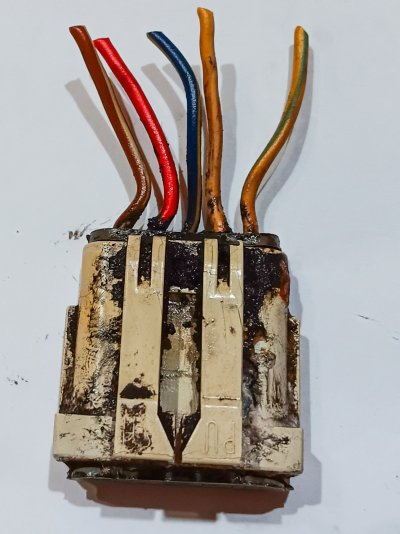Rupert8
Registered User
Hello all,
So - after working on this truck and ironing out a fair number of issues - thanks to the help of the members of this forum - I was driving to work a couple days ago patting myself on the back for getting all the 'key' jobs done and enjoying owning a reliable vehicle.
Silly me. So recently I've been making a point to park in a clean spot on asphalt while I have been at work for nine hours a day just to do a thorough check to make sure there were no leaks etc when standing. None! For over a week! Felt good!
I did the same yesterday but this time found a spot under the driver side door. Are you kidding me?!
Checking under the truck I see fuel is dripping from the lowest point on the frame by the fuel selector valve. The top half of the valve is dry, the bottom half is wet. The biggest wet area is on the rear tank return line, but, again, this might just be a low spot. It's a surprisingly frequent drip.
Looks like I have either a leaky coupling between a fuel line and the valve, or a leaking valve itself. The lines up to the valve on each side appear dry.
I'd like to ask some questions before I embark on this - I've found going into a job well-informed by Oilburners contributors is very helpful.
I'm planning on replacing the valve, I guess. My questions:
*If I cut the fuel lines to replace the couplings to fit a new valve, am I just going to get a tank full of fuel siphoning back at me? (If so I'll be ready. Tank is almost full....)
*Is there a common area from which these valves leak? Like the female couplings themselves? Or an o-ring on the pump?
*I can't find a valve that exactly matches the current one I have. The current (leaking) valve has one each of supply and return on the top, bottom and the rear-facing end. The closest one I can find is this one (which seems to have an extra inlet/outlet, which concerns me). Other than having to wire up a new connector correctly and reroute the fuel lines a bit using fuel hose, anybody foresee any issues here? Looks like the mounting bolts should match up. That would be something at least....
*Guessing this new valve will require new couplings, correct?
*Are there any fuel pressure - or other issues - which could cause a pump to leak? In other words, should I also be looking elsewhere?
Anything else I should know before getting into this? Really need this truck working by the end of this week for a job..... Doing some research online I see that these valves are a weak link on the truck, but I can't find any direct information on the questions above.
Thanks as always.
So - after working on this truck and ironing out a fair number of issues - thanks to the help of the members of this forum - I was driving to work a couple days ago patting myself on the back for getting all the 'key' jobs done and enjoying owning a reliable vehicle.
Silly me. So recently I've been making a point to park in a clean spot on asphalt while I have been at work for nine hours a day just to do a thorough check to make sure there were no leaks etc when standing. None! For over a week! Felt good!
I did the same yesterday but this time found a spot under the driver side door. Are you kidding me?!
Checking under the truck I see fuel is dripping from the lowest point on the frame by the fuel selector valve. The top half of the valve is dry, the bottom half is wet. The biggest wet area is on the rear tank return line, but, again, this might just be a low spot. It's a surprisingly frequent drip.
Looks like I have either a leaky coupling between a fuel line and the valve, or a leaking valve itself. The lines up to the valve on each side appear dry.
I'd like to ask some questions before I embark on this - I've found going into a job well-informed by Oilburners contributors is very helpful.
I'm planning on replacing the valve, I guess. My questions:
*If I cut the fuel lines to replace the couplings to fit a new valve, am I just going to get a tank full of fuel siphoning back at me? (If so I'll be ready. Tank is almost full....)
*Is there a common area from which these valves leak? Like the female couplings themselves? Or an o-ring on the pump?
*I can't find a valve that exactly matches the current one I have. The current (leaking) valve has one each of supply and return on the top, bottom and the rear-facing end. The closest one I can find is this one (which seems to have an extra inlet/outlet, which concerns me). Other than having to wire up a new connector correctly and reroute the fuel lines a bit using fuel hose, anybody foresee any issues here? Looks like the mounting bolts should match up. That would be something at least....
*Guessing this new valve will require new couplings, correct?
*Are there any fuel pressure - or other issues - which could cause a pump to leak? In other words, should I also be looking elsewhere?
Anything else I should know before getting into this? Really need this truck working by the end of this week for a job..... Doing some research online I see that these valves are a weak link on the truck, but I can't find any direct information on the questions above.
Thanks as always.
Last edited:


